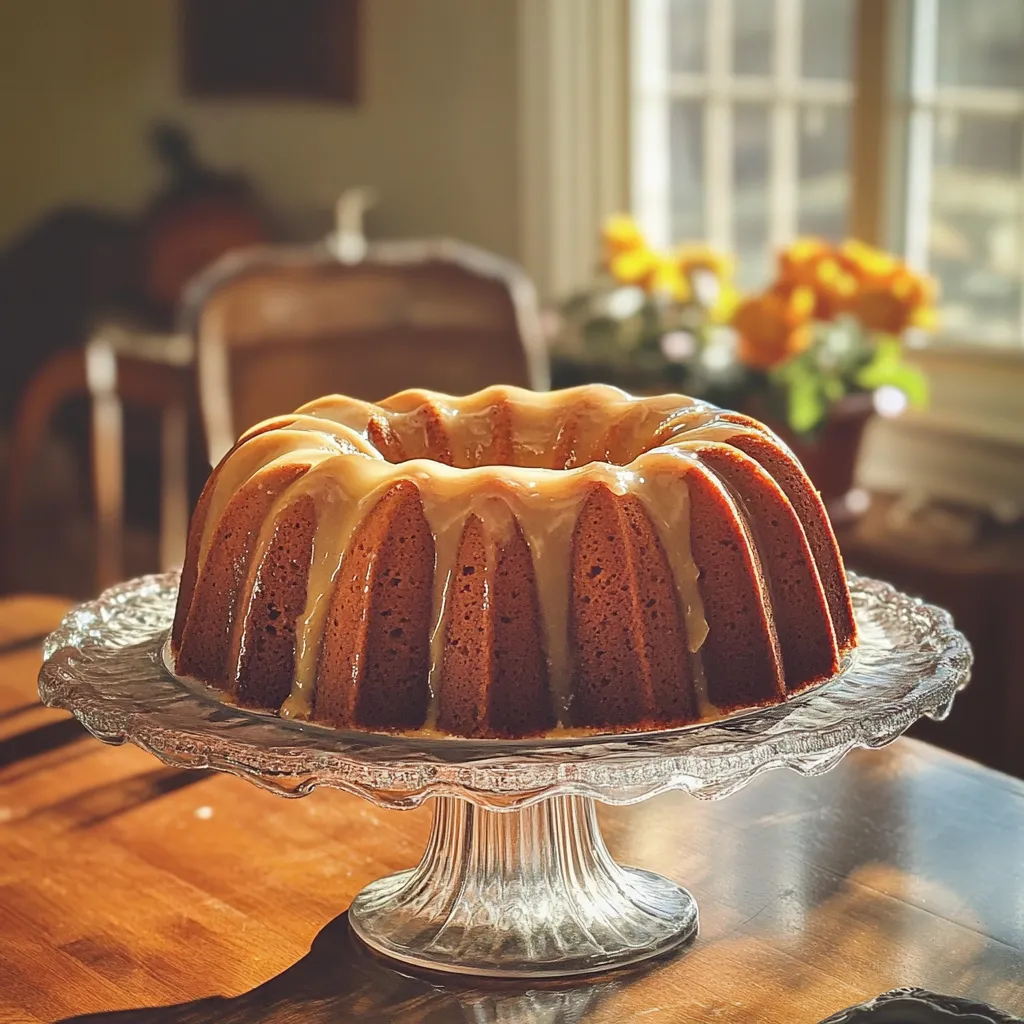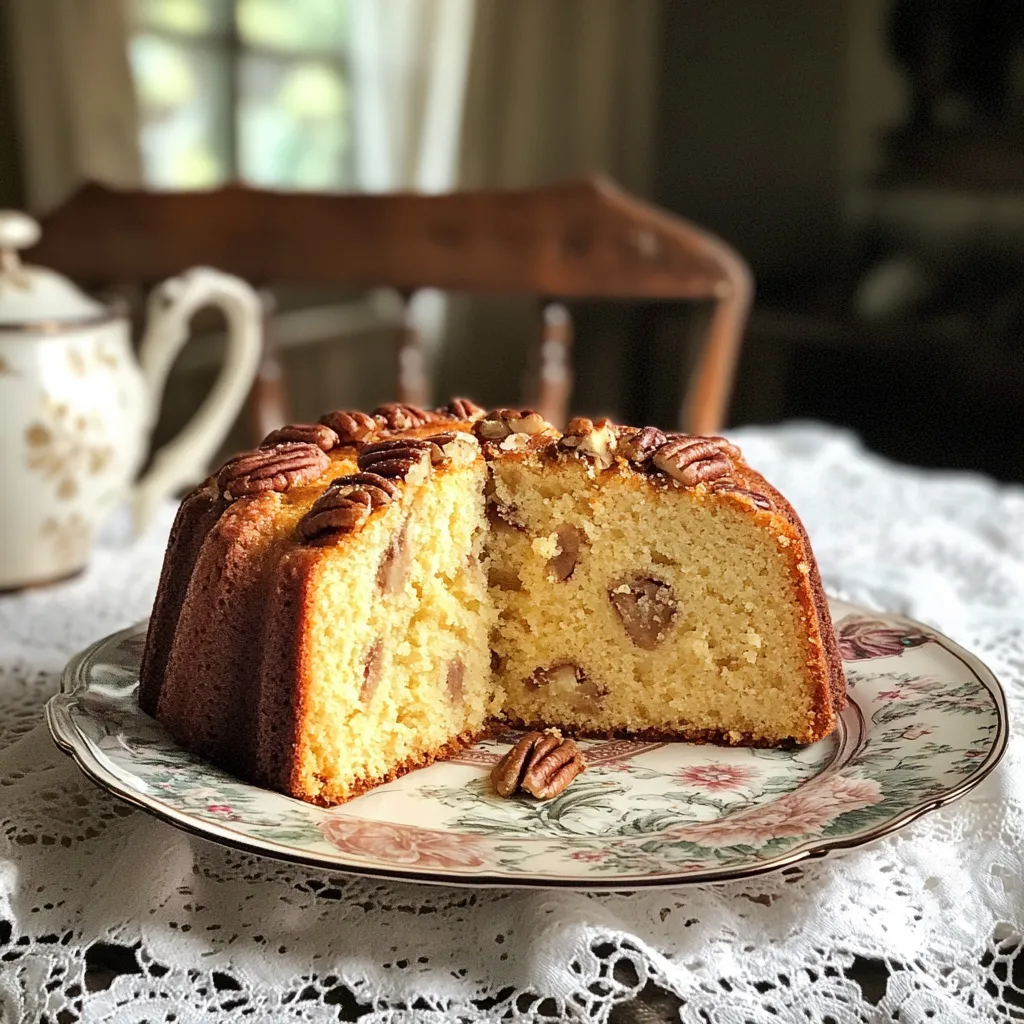 Save to Pinterest
Save to Pinterest This butter pecan pound cake combines rich, nutty goodness with delicate sweetness for a dessert that's both elegant and comforting. The toasted pecans create a beautiful contrast against the tender cake crumb, while the cream cheese adds moisture that keeps this pound cake luscious for days.
I first made this cake for my mother's birthday gathering, and it's become the most requested dessert at our family functions. Even my nephew who claims to dislike nuts asks for seconds every time.
Ingredients
- Chopped pecans bring essential nutty flavor and wonderful texture contrast
- Room temperature butter creates that classic pound cake richness
- Cream cheese adds moisture and tanginess that balances the sweetness
- Brown sugar provides depth of flavor that white sugar simply cannot match
- Room temperature eggs bind everything together properly
- Cake flour ensures a tender, delicate crumb structure
- Vanilla extract rounds out the flavor profile with warmth
Step-by-Step Instructions
- Prepare the Pan
- Preheat your oven to 325°F and thoroughly prepare your tube pan with nonstick spray and a light flour coating. This crucial step prevents sticking, especially important with the pecan layer on the bottom. Take time to evenly sprinkle half a cup of chopped pecans across the bottom of the pan, creating a beautiful nutty crown when the cake is inverted.
- Create the Base Mixture
- Beat the cream cheese and butter together until completely smooth with no lumps whatsoever. This usually takes about 3 minutes with an electric mixer. Add the brown sugar and continue beating for 4 to 5 full minutes. This extended mixing incorporates air into the batter, creating the perfect pound cake texture.
- Add the Eggs
- Add each egg individually, mixing completely after each addition. This gradual approach prevents the batter from curdling and ensures proper emulsification. Take your time with this step as it builds the structure of your cake.
- Incorporate Dry Ingredients
- Gently fold in the flour using a large spatula with a light hand. Stop mixing as soon as the flour disappears to avoid developing gluten, which would make your cake tough. This gentle folding motion preserves the air you incorporated earlier.
- Add Flavor Elements
- Stir in the vanilla extract and remaining chopped pecans, distributing them evenly throughout the batter. The pecans should be evenly suspended in the batter, not sinking to the bottom.
- Bake the Cake
- Carefully spoon the batter into your prepared pan rather than pouring it all at once. This helps maintain the air bubbles in the batter. Place the pan on a baking sheet to catch any potential overflow and provide more even heat distribution. Bake for approximately 90 minutes, or until a toothpick inserted comes out clean.
- Cool and Frost
- Allow the cake to cool in the pan for exactly 15 minutes. This timing is crucial too short and the cake may break, too long and it might stick. Remove to a wire rack for complete cooling before applying the cream cheese frosting in smooth, even strokes.
 Save to Pinterest
Save to Pinterest This recipe reminds me of Sunday afternoons at my grandmother's house. She would always have a similar butter pecan cake waiting when we visited, and the smell of toasting pecans still brings me right back to her kitchen. I think the real secret is using high quality pecans that are fresh and properly toasted.
The Perfect Pound Cake Texture
The success of this pound cake depends on achieving that perfect dense yet tender crumb. The key lies in properly creaming the butter, cream cheese, and sugar. Your mixture should be noticeably lighter in both color and texture before adding eggs. Undermixing at this stage results in a heavy, dense cake, while overmixing the flour later causes toughness. Room temperature ingredients are non negotiable here they must incorporate properly to create the ideal texture.
Storing Your Butter Pecan Pound Cake
This cake maintains its quality remarkably well. Store the frosted cake in the refrigerator, covered with a cake dome or plastic wrap, for up to five days. For longer storage, freeze individual slices wrapped in plastic wrap and placed in freezer bags. The unfrosted cake can be frozen whole for up to three months. To defrost, place in the refrigerator overnight, then bring to room temperature before serving or frosting.
Serving Suggestions
While delicious on its own, this butter pecan pound cake reaches new heights with thoughtful accompaniments. Serve slightly warmed with a scoop of vanilla ice cream for dessert, or alongside coffee for breakfast or afternoon tea. For an elevated presentation, drizzle plates with caramel sauce before adding cake slices and garnish with fresh seasonal berries and mint leaves. The cake pairs wonderfully with both coffee and dessert wines like Sauternes or late harvest Riesling.
 Save to Pinterest
Save to Pinterest Common Recipe Questions
- → Can I use all-purpose flour instead of cake flour?
Yes, you can substitute all-purpose flour for cake flour, though the texture may be slightly less light and tender. Cake flour creates a finer crumb due to its lower protein content, but the pound cake will still be delicious with all-purpose flour.
- → How should I store this butter pecan pound cake?
Store the frosted cake in the refrigerator for up to five days due to the cream cheese frosting. For longer storage, you can freeze the unfrosted cake tightly wrapped for up to three months. Thaw overnight in the refrigerator before frosting.
- → Why do all ingredients need to be at room temperature?
Room temperature ingredients (especially butter, cream cheese, and eggs) blend more smoothly and incorporate more air when beaten, resulting in a more even texture and better rise in the finished cake.
- → Can I make this cake without nuts?
Yes, you can omit the pecans entirely for a nut-free version. The cake will have a different flavor profile but will still maintain its rich, buttery taste and moist texture from the cream cheese and brown sugar.
- → Why do you place the cake pan on a baking sheet?
Placing the tube pan on a baking sheet helps catch any potential overflow and provides more even heat distribution during baking, especially helpful for dense cakes like pound cake that require longer baking times.
- → How do I know when the cake is fully baked?
Insert a toothpick into the center of the cake—it should come out clean or with a few moist crumbs, but no wet batter. The cake should also begin to pull away slightly from the sides of the pan, and the top should feel firm when lightly pressed.